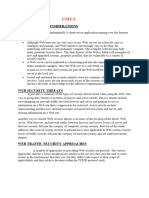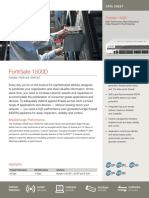0% found this document useful (0 votes)
23 views68 pagesModule 6
The document outlines the concepts of Transport Layer Security (TLS) and IP Security (IPSec) as part of a cryptography and network security course. It details the architecture, protocols, and functionalities of TLS, including the handshake process, alert protocols, and heartbeat protocol, as well as the services and applications of IPSec, including its modes of operation and security policies. The document serves as a comprehensive guide for understanding secure communication over networks.
Uploaded by
Sp SandeepCopyright
© © All Rights Reserved
We take content rights seriously. If you suspect this is your content, claim it here.
Available Formats
Download as PPT, PDF, TXT or read online on Scribd
0% found this document useful (0 votes)
23 views68 pagesModule 6
The document outlines the concepts of Transport Layer Security (TLS) and IP Security (IPSec) as part of a cryptography and network security course. It details the architecture, protocols, and functionalities of TLS, including the handshake process, alert protocols, and heartbeat protocol, as well as the services and applications of IPSec, including its modes of operation and security policies. The document serves as a comprehensive guide for understanding secure communication over networks.
Uploaded by
Sp SandeepCopyright
© © All Rights Reserved
We take content rights seriously. If you suspect this is your content, claim it here.
Available Formats
Download as PPT, PDF, TXT or read online on Scribd
/ 68



























































































